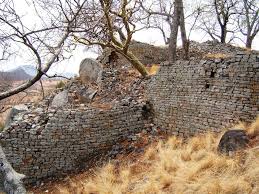


 I AM excited! This Christimas, I will be exploring Hwange National Park again. From Hwange, I will pass through the City of Kings, Bulawayo, to visit the National Museums. Historians tell me a trophy of one of the greatest elephants ever captured in Zimbabwe is kept there. I will share with you my experiences in that wildlife estate in the BACK OF BEYOND next year.
I AM excited! This Christimas, I will be exploring Hwange National Park again. From Hwange, I will pass through the City of Kings, Bulawayo, to visit the National Museums. Historians tell me a trophy of one of the greatest elephants ever captured in Zimbabwe is kept there. I will share with you my experiences in that wildlife estate in the BACK OF BEYOND next year.
In September, I was in Buhera’s Matendera Ruins. Earlier on, I had explored the Great King Shaka’s forests in a light aircraft. I relive those hillarious experiences again! Minister of Tourism, Walter Mzembi’s invitation for me to attend World Tourism Day celebrations at Matendera Ruins in Buhera proved too difficult to turn down. I had never set my foot at any of these Iron Age capitals that have defied age and still proudly stand as reminders of Zimbabwe’s early civil engineering ingenuity.
I just had to go! We arrived at Murambinda Growth Point from Harare midnight to be greeted by both shock and pleasant surprises. Outside Harare’s luxurious hotels and modern malls, night life is still vibrant, I realised. This is in spite of the liquidity crisis, high unemployment and the economic slowdown that has rattled families and turned once stable communities upside-down across this country. At Murambinda, youths and the mature intoxicated themselves with the wise waters.
Boys and scantily dressed girls, as well as men and women, made sexually suggestive dances to the latest Zim dancehall music well into the early hours of the following day. In a scarcely-lit nightclub, boys and girls danced in rhythmic fashion, moving sideways, backwards and to the front. Males and females caressed each other’s hips, frequently shifting dancing styles from dancehall to jiti. When the track, Vakomana Ndanakirwa, Handiende Kumba…. Kumba Kunouya Kuno, was belted, the revellers livened up.
The song means “I am enjoying and I will not go home. My home must come here”. Before we knew it, it was 0300hrs. The warm hospitality of the patrons of Murambinda was assuring. But one will never exhaust the array of attractions in Manicaland, where Buhera is situated. About 45 kilometres south of Murambinda is the breathtaking Matendera Ruins. The monument proudly sits on the summit of a centuries-old dwala that cuts an imposing figure over largely submissive mountain ranges bordering barren, rolling plains on its fringes.
Matendera is so majestic that once one gets a glimpse of it, they can easily ignore the extensive suffering and hunger evident across the populous communal lands in Chief Nyashanu’s area. In all directions, the expansive plains disappear where the undulating mountain ranges starts. I was privileged to set foot on these remnants of the ruins that were the capital of several ancient towns that sprouted across Manicaland after the fall of Great Zimbabwe at least three centuries ago.
Nobody knows exactly when Matendera was built, who built it, or the kingdom that called the shots from this structure of immense historical significance. That the rulers were ancestors of present day Shona people is no doubt. It resembles the Great Zimbabwe Ruins. A royal dosage of fine wind accompanied me up to the palace where I am convinced was one of the seats of a powerful kingdom. Walking past several ruins of round stone huts that must have been the residence of commoners, something struck my eye: It should have been the queen’s house.
The king would proudly walk down the hill to visit the queen. But he would call any beautiful girl he wanted up to the palace when and as he wished. Over to King Shaka’s forests On a familiarisation tour of the Victoria Falls-Johannesburg route aboard Air Zimbabwe, staff was confident that they would be able to take on two regional giants on the busy southwestern airway, which is always brimming with super-premium air services.
British Airways’ Comair and South African Airways (SAA) have built unequalled passenger loyalty there. And AirZim would not easily swing passengers its way. The one and half hour flight into Johannesburg was a pleasant experience. We flew over the land that was once ruled by southern Africa’s greatest kings — Shaka the Zulu on the southern banks of the Limpopo, and Lobengula to the north.
Virgin forests, untouched since time immemorial, sprung out, only being interrupted by sporadic meandering rivers, which offered a rare sense of relief in a generally difficult climate. We took advantage of the Embraer’s low flying altitude, to get a glimpse of Zimbabwean hospitality even before touchdown.
newsdesk@fingaz.co.zw